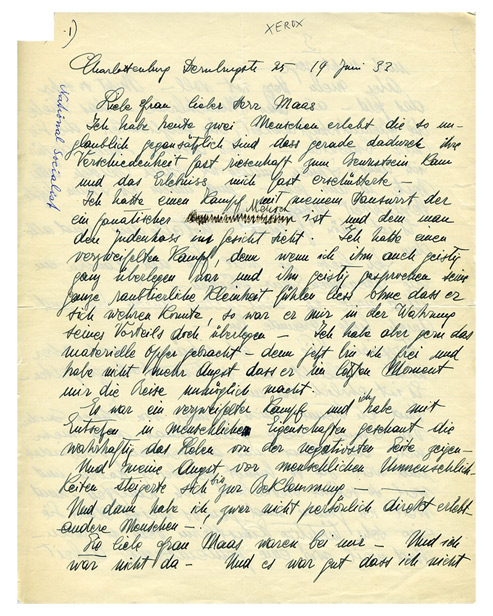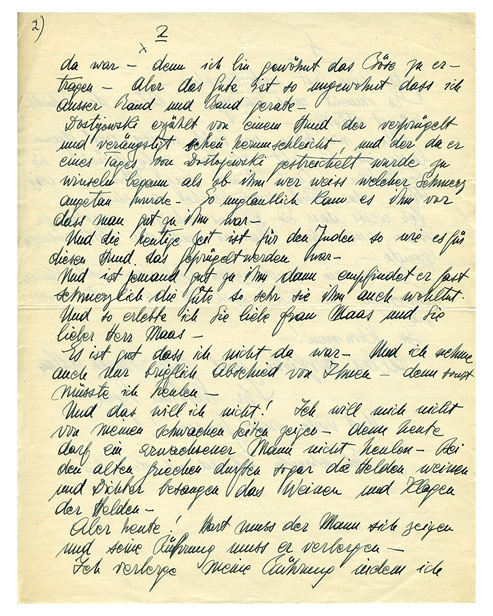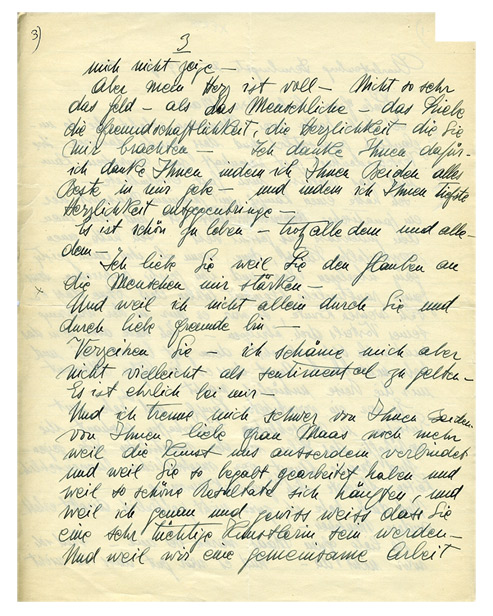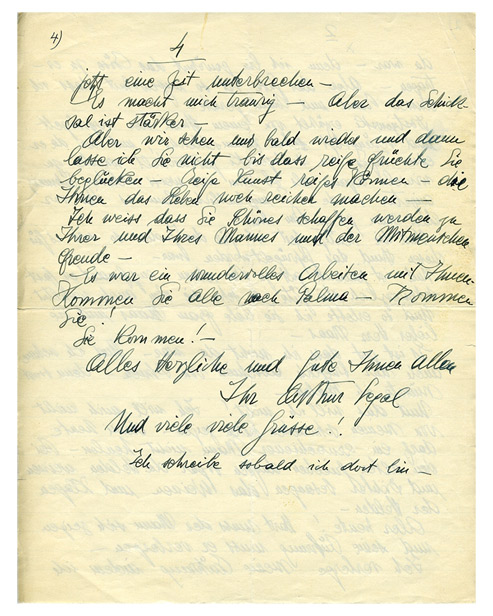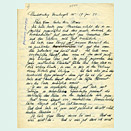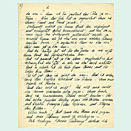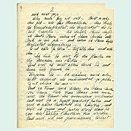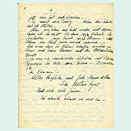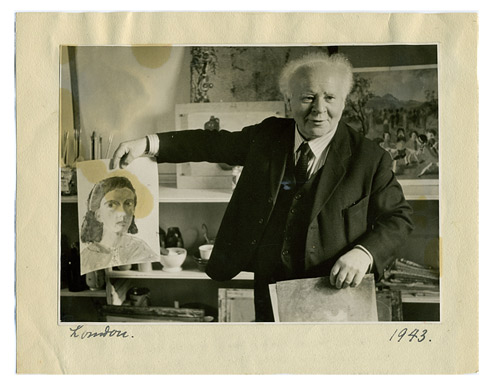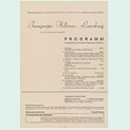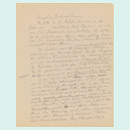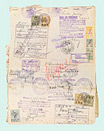In 1933 an artist like Arthur Segal (1875–1944)—Jewish, Romanian-born, affiliated with the avant-garde—was no longer welcome in Germany. Isolated from cultural life, which had been aligned with Nazi ideology, subject to antisemitic hostility and without the opportunity to exhibit his work or earn a living, he had no future as a painter or teacher. As a result Segal decided to leave Berlin with his wife and daughter and move to Mallorca, where his son was already working as an architect.
In this situation he turned to one of his students, Frau Maas, writing her a letter on 19 June 1933 that reveals both his emotional state at the time and his personality as a teacher. He says good-bye to her and her husband and thanks both of them for their support: "My heart is full, not so much because of the money you have provided me with, but because of the humanity, the love, the friendliness and the warmth you have shown me." These are things, he writes, that Jews such as himself rarely encounter "these days." He ends the letter by offering Frau Maas words of encouragement and predicting that she will become "a very capable artist."
After arriving in Mallorca, Segal remained in contact with his students by mail. His early letters referred to the island‘s inspiring light and colors in euphoric terms but he soon became depressed due to financial problems and feelings of homelessness. In December 1933 he wrote to another student, Annemarie Ratkowski-Brown, saying: "Yes, my dears, it is intolerable being a Jew …. For forty years I lived in Germany and painted and worked and loved all things German. Now we are stateless and have been expelled so that we should perish." He repeatedly requested financial assistance—including from Frau Maas, who apparently sent him money.
In 1936, after the outbreak of the Spanish Civil War, the Segals fled to Britain. There is evidence that Frau Maas helped them get there. In England the family‘s situation remained precarious and in 1940/41 the British interned Segal as an "enemy alien" on the Isle of Man. He died of a heart attack during a bombing raid on London on 23 June 1944.
Henriette Kolb
Charlottenburg, Dernburgstr. 25
19 June 1933
Dear Frau and Herr Maas
Today I encountered two people who were so extraordinarily different that this difference took on almost gigantic proportions in my mind, an experience that I found almost shattering.
I had a fight with my landlord, a fanatical person who clearly hates Jews. It was a desperate fight because although I am his intellectual superior and was able, in intellectual terms, to make him feel like the puny predator he is, he nevertheless proved my superior in the way he maintained his advantage. I was happy to make the material sacrifices, for now I am free and no longer need to fear that he will prevent my trip at the last minute.
It was a desperate fight and I looked with horror upon human traits that truly show life from its negative side. And my fear of human inhumanity increased to the point of anxiety.
And then I experienced other people, though not personally or directly!
You, my dear Frau Maas, were at my home and I wasn‘t there. And it was good that I wasn‘t
(Page 2)
there—for I am accustomed to enduring evil, but am so unused to human goodness that it can quite overwhelm me.
Dostoevsky tells the story of a beaten, fearful dog that skulks about timidly. When Dostoevsky pets it one day, it begins to whimper as if it is being hurt in some way. The poor creature is unable to understand this act of kindness.
Thus it is for Jews these days.
If someone is kind to us, it is almost painful, as much it does us good. And this has been my experience with you, dear Frau Maas, and you, Herr Maas.
It‘s fortunate that I wasn‘t at home. And that I can only say good-bye to you by letter. Otherwise I might have to cry.
And I don‘t want to! I don‘t want to show my weak side because a grown man is not allowed to cry these days. In ancient Greece even the heroes were allowed to cry and the poets praised the heroes‘ tears and lamentations.
But today! A man has to be strong and hide his emotions.
I hide my emotions by
(Page 3)
not showing myself. But my heart is full, not so much because of the money you have provided me with, but because of the humanity, the love, the friendliness, the warmth you have shown me. Thank you! And I will thank you by giving both of you all the best in me—and by showing you the most heartfelt warmth.
It‘s wonderful to be alive, despite everything.
I love you because you strengthen my faith in human beings.
And because having you and other dear friends means that I am not alone. Forgive me, but I am not ashamed if I am perhaps seen as being sentimental. I am being honest.
And I find it difficult to part from both of you; from you, Frau Maas, all the more so because art connects us, because you have applied such talent to your work and produced such beautiful results, because I am certain that you will became a very capable artist. And because we now have to interrupt our joint work
(Page 4)
for a long time.
It saddens me. But destiny has gained the upper hand.
But we will soon be reunited and then I will not let you go until ripened fruits bring joy to your life—a mature art, a mature talent that will make life even richer.
I know that you will create beautiful things to the delight of yourself, your husband and others.
It was a wonderful working with you. Come, both of you, to Palma. Come!
You will come!
All the best,
Your Arthur Segal
And many many greetings!
I will write as soon as I’m there.
